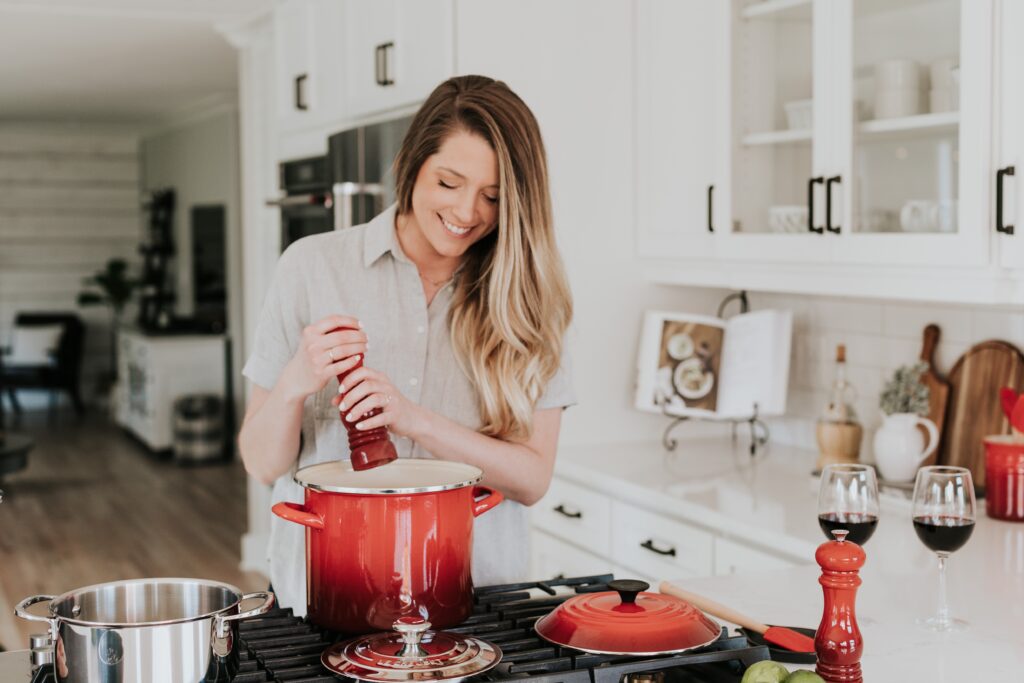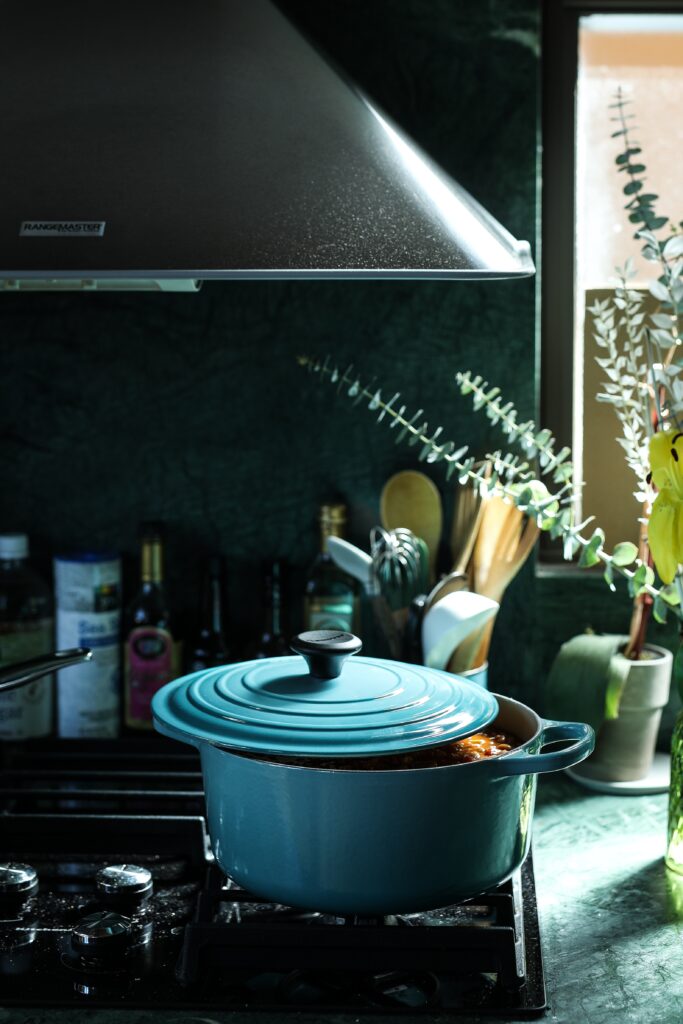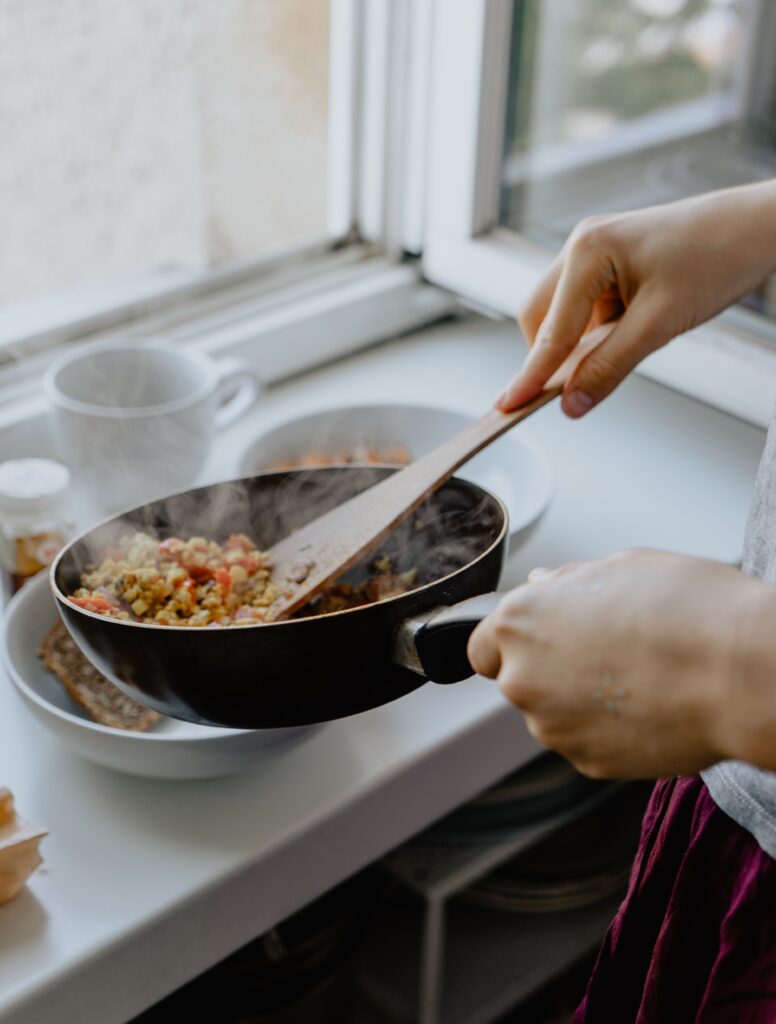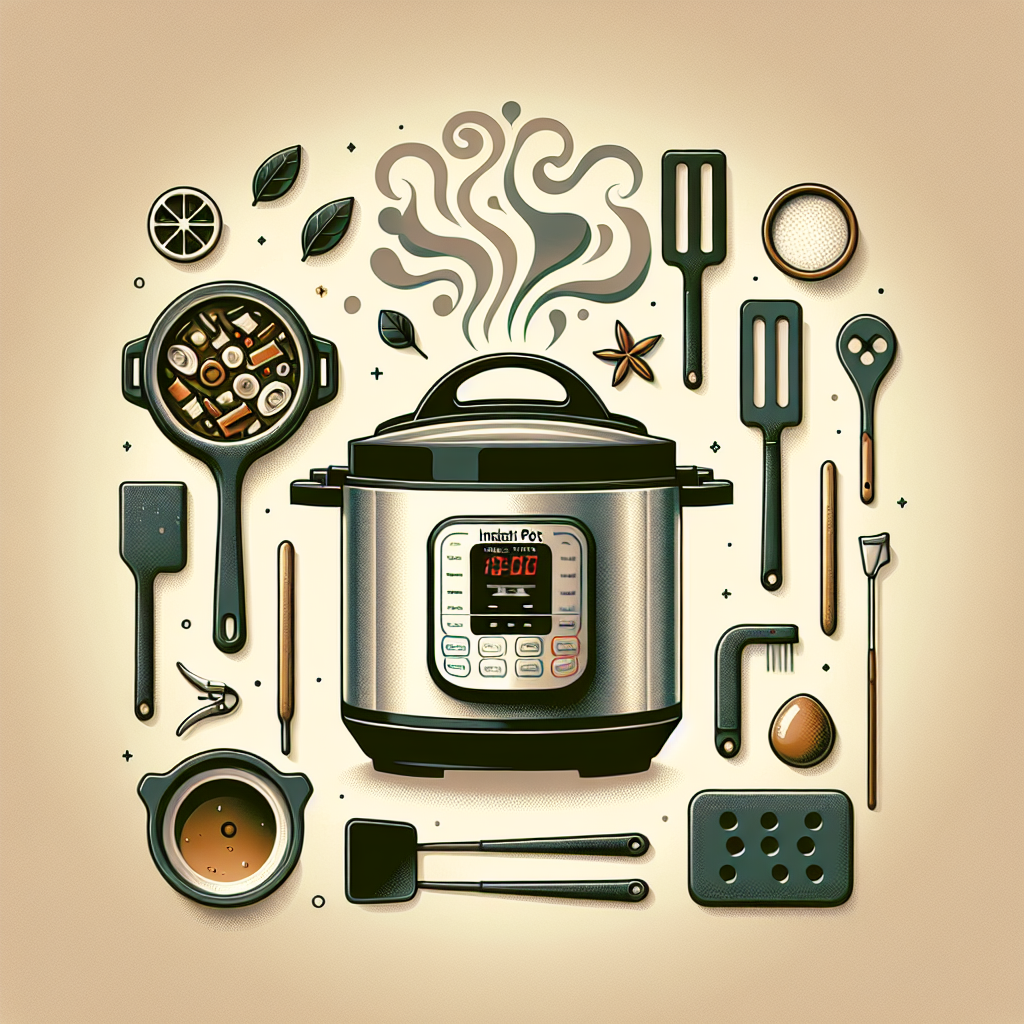Have you ever experienced the dreaded “Instant Pot Food Burn” message while cooking your favorite meal? We know the frustration of eagerly preparing a delicious dish, only to be foiled by this all too familiar warning. But fear not, dear culinary adventurers, for we have gathered some valuable tips and tricks to help you avoid and overcome the Instant Pot Food Burn dilemma. Whether you’re a seasoned chef or a cooking novice, join us as we unravel the secrets to achieving perfectly cooked meals in your Instant Pot, without any burnt mishaps along the way.

What is Instant Pot Food Burn?
Instant Pot Food Burn refers to the situation where food becomes burned or scorched while cooking in an Instant Pot. This can result in an unpleasant taste, ruined dish, and potentially damage to the Instant Pot itself. It is important to understand the causes, symptoms, and how to prevent and fix food burn in order to have successful and delicious cooking experiences with your Instant Pot.
Definition of Instant Pot Food Burn
Instant Pot Food Burn occurs when food sticks to the bottom of the inner pot and starts to burn during the cooking process. This can trigger the Instant Pot’s burn sensor, causing it to stop cooking and display an error message. The burn sensor is a safety feature designed to prevent overheating and potential accidents. It helps protect against food burn and avoids any potential damage to the Instant Pot.
Causes of Instant Pot Food Burn
There are several factors that can contribute to food burn in an Instant Pot. Understanding these causes can help you take preventative measures and ensure your dishes turn out perfectly cooked every time.
One common cause of food burn is not using enough liquid. Instant Pots require a certain amount of liquid to create steam and build pressure. Without enough liquid, the food can come into direct contact with the heating element, leading to burning.
Inadequate stirring can also lead to food burn. When certain ingredients, such as thick sauces or creamy ingredients, aren’t properly stirred, they can settle at the bottom of the pot and burn during cooking.
Overcooking is another common cause of food burn. Cooking times may need to be adjusted depending on the type and quantity of food being cooked. Prolonged cooking can cause the food to dry out and burn.
Using thicker sauces or creamy ingredients can increase the risk of food burn. These types of ingredients have a higher likelihood of sticking to the bottom of the pot if not properly thinned or stirred.
Improper layering of ingredients can also contribute to food burn. Layering dense or sticky ingredients directly on the bottom of the pot can result in burning. Proper layering techniques will help distribute heat evenly and prevent burning.
Insufficient deglazing can cause food to burn as well. Deglazing involves adding liquid to the pot after sautéing to loosen any browned bits that may be stuck to the bottom. Failure to deglaze can lead to burning when pressure cooking begins.
Symptoms of Instant Pot Food Burn
There are a few telltale signs that indicate your food may have burned in the Instant Pot. The most obvious symptom is a burnt smell. If you notice a strong, unpleasant odor coming from your Instant Pot, it is likely that your food has burned.
Additionally, you may see bits of burnt food stuck to the bottom of the pot. These can range in color from dark brown to black. Burnt food remnants can also affect the taste and texture of your dish, making it less enjoyable to eat.
If the Instant Pot’s burn sensor is triggered, it will display an error message indicating the presence of food burn. This is an important safety feature that prevents further cooking and potential damage to the Instant Pot.
Common Mistakes That Lead to Food Burn
To prevent food burn in the Instant Pot, it’s important to be aware of the common mistakes that can lead to this undesirable outcome.
Not Enough Liquid
One of the fundamental causes of food burn is not using enough liquid. When using your Instant Pot, it is essential to follow the recommended liquid measurements in the recipe or Instant Pot guidelines. This ensures that there is sufficient liquid to create steam and build pressure, preventing the food from burning.
Inadequate Stirring
Proper stirring is crucial to evenly distribute ingredients and prevent sticking. Failing to stir ingredients, especially those prone to sticking, can lead to food burn. Take the time to stir your ingredients thoroughly before starting the cooking process.
Overcooking
Overcooking can result in dry, burnt food. Each recipe and ingredient has an optimal cooking time in the Instant Pot. It is important to follow the recommended cooking time and adjust it accordingly based on the specifics of the dish being prepared.
Using Thicker Sauces or Creamy Ingredients
Thick sauces and creamy ingredients are more prone to burning due to their consistency. If a recipe calls for using thick sauces or creamy ingredients, it is important to thin them down with additional liquid. This will help prevent burning and ensure even cooking.
Improper Layering
Layering ingredients properly is essential for even heat distribution and preventing food burn. Start by placing a sufficient amount of liquid at the bottom of the pot to create steam. Then, layer your ingredients in a way that prevents direct contact with the heating element. This will help avoid burning and ensure all ingredients cook evenly.
Insufficient Deglazing
After sautéing ingredients in the Instant Pot, it is crucial to deglaze the pot by adding liquid and scraping the bottom to loosen any browned bits. Failure to do so can lead to burned food during pressure cooking. Deglazing will help prevent burning and enhance the overall flavor of your dish.
How to Prevent Food Burn in Instant Pot
Now that we know the common mistakes that lead to food burn, let’s explore some effective strategies to prevent this issue in the first place. By following these guidelines, you can ensure that your Instant Pot cooking experiences are enjoyable and successful.
Use Sufficient Liquid
As mentioned earlier, using enough liquid is vital to prevent food burn. Refer to the specific recipe or Instant Pot guidelines for recommended liquid measurements. Adjust the amount of liquid according to the ingredients you are using, ensuring there is always an adequate amount for steam and pressure to build.
Stir Frequently
Make it a habit to stir your ingredients frequently while cooking in the Instant Pot. This will prevent them from settling at the bottom and reducing the risk of burning. Stirring will also help distribute heat evenly, resulting in well-cooked dishes.
Adjust Cooking Time
Each recipe and ingredient requires a specific cooking time in the Instant Pot. It is important to follow the recommended cooking time, but also be prepared to make adjustments based on your preferences or the specific dish being prepared. Overcooking can lead to dry, burnt food, so keep a close eye on the cooking time to prevent this.
Thin Down Thick Sauces or Creamy Ingredients
To avoid burning with thick sauces or creamy ingredients, ensure they are thinned down with additional liquid. This will prevent them from sticking to the bottom and promote even cooking. Adjust the consistency of the sauces or creamy ingredients before adding them to the Instant Pot.
Proper Layering Techniques
Layering ingredients properly is a critical step in preventing food burn. Start by adding liquid to the bottom of the pot, followed by ingredients that are less likely to stick or burn. Place denser or stickier ingredients on top, ensuring they are not in direct contact with the heating element. This will help distribute heat evenly and prevent burning.
Deglaze the Pot
After sautéing ingredients in the Instant Pot, do not forget to deglaze the pot. Deglazing involves adding liquid and scraping the bottom to release any browned bits that may lead to burning. Take the time to deglaze the pot before initiating pressure cooking for optimal cooking and to prevent food burn.
How to Fix Food Burn in Instant Pot
Despite your best efforts, it is still possible for food to burn in the Instant Pot. If you find yourself in this situation, don’t worry! There are steps you can take to salvage the dish and prevent any further damage.
Switch Off the Instant Pot
If you notice that your food has burned, the first step is to switch off the Instant Pot. This will stop the cooking process and prevent any further burning.
Release Pressure
After switching off the Instant Pot, release the pressure manually. Follow the manufacturer’s instructions to safely release the pressure from the pot.
Check for Burnt Food
Carefully inspect the contents of the pot for any burnt food. Remove any burnt pieces before proceeding to the next step.
Transfer Burnt Food to Another Container
To avoid further burning and to prevent the burnt flavor from spreading, transfer the remaining unburnt food to another container. This will allow you to salvage any unburnt portions of the dish.
Heat on Saute Mode
Switch the Instant Pot to the saute mode. This will allow you to continue cooking the dish and eliminate any remaining burnt taste. Do not forget to add sufficient liquid to prevent further burning. Stir the food frequently to distribute heat evenly.
Add Liquid
During the saute mode, add additional liquid if necessary. This will help deglaze the pot and provide moisture to the dish. Adjust the consistency and flavor as desired.
Scrape the Bottom
While the pot is still in saute mode, use a spoon or spatula to scrape the bottom of the pot. This will help remove any remaining bits of burnt food and prevent them from affecting the taste of the dish.
Finish Cooking
Continue cooking the dish until it reaches the desired doneness. Keep a close eye on the pot and adjust the heat as needed to prevent any further burning.

Cleaning and Maintenance
To ensure the longevity and optimal performance of your Instant Pot, proper cleaning and maintenance are essential. Follow these guidelines to keep your Instant Pot in top condition.
Cooling the Instant Pot
Before cleaning the Instant Pot, allow it to cool down completely. The inner pot, sealing ring, and lid should all be at room temperature before cleaning.
Cleaning the Pot
After the Instant Pot has cooled down, remove the inner pot and wash it with warm, soapy water. Use a non-abrasive sponge or cloth to avoid scratching the pot. Rinse it thoroughly and dry it completely before reassembling.
Cleaning the Sealing Ring
The sealing ring, located inside the lid, can collect food residue over time. Remove the sealing ring and rinse it under warm water. If there are any stubborn stains or odors, soak the sealing ring in a mixture of warm water and vinegar for a few hours. Rinse it thoroughly and ensure it is completely dry before reinserting it into the lid.
Cleaning the Lid
Clean the lid of the Instant Pot with warm, soapy water, making sure to remove any food particles or stains. Wipe dry with a clean cloth before storage.
Dry and Store Properly
After cleaning, ensure that all parts of the Instant Pot, including the inner pot, sealing ring, and lid, are thoroughly dry. Moisture can lead to unwanted odors or even damage to the Instant Pot over time. Store the Instant Pot in a cool and dry place, away from direct sunlight and extreme temperatures.
Tips and Tricks to Avoid Food Burn
In addition to the preventative measures mentioned earlier, here are some additional tips and tricks to help you avoid food burn when using your Instant Pot.
Use the ‘Pot in Pot’ Method
The ‘Pot in Pot’ method involves placing ingredients in a separate oven-safe container inside the Instant Pot, adding water to the inner pot, and using a trivet to elevate the container. This technique helps prevent direct contact with the heating element, reducing the risk of burning.
Thicken Sauces AFTER Cooking
Instead of thickening sauces before cooking, consider thickening them after the dish is cooked in the Instant Pot. This way, you can control the consistency more accurately and avoid any potential burning.
Precook Ingredients
For ingredients that are prone to burning, such as onions or aromatics, consider precooking them before adding them to the Instant Pot. This will help reduce the cooking time and minimize the risk of burning.
Avoid Thickening Agents
When using the Instant Pot, it’s best to avoid thickening agents like flour or cornstarch. These can increase the likelihood of burning and affect the overall texture of the dish.
Experiment with Temperature
Different Instant Pot models may have varying heat levels. Experiment with different temperatures, such as high or low, to find the optimal setting for your recipes. This can help prevent food burn and produce the best results for your specific Instant Pot model.

Frequently Asked Questions (FAQs)
What causes the ‘Burn’ error message?
The ‘Burn’ error message is triggered by the Instant Pot’s burn sensor when it detects that the food is burning or has the potential to burn. It is typically caused by insufficient liquid, inadequate stirring, overcooking, using thick sauces or creamy ingredients, improper layering, or insufficient deglazing.
Can I still eat the food if it has burned?
It is generally not advisable to eat food that has burned in the Instant Pot. Burnt food can have an unpleasant flavor and texture, and may even pose health risks. It is best to discard any food that has burned and start fresh.
Can the ‘Burn’ error be fixed?
Yes, the ‘Burn’ error can be fixed by following the steps outlined earlier in this article. By switching off the Instant Pot, releasing the pressure, removing any burnt food, transferring the remaining unburnt food, heating on saute mode with added liquid, scraping the bottom, and finishing the cooking process, you can salvage the dish.
How do I know if my Instant Pot has burned the food?
You can determine if your Instant Pot has burned the food by checking for a burnt smell, visual signs of burnt food stuck to the bottom of the pot, or by the presence of the ‘Burn’ error message on the Instant Pot’s display.
Conclusion
Instant Pot Food Burn can be a frustrating experience, but with proper knowledge and implementation of preventive measures, you can avoid this issue. By understanding the causes, symptoms, and steps to prevent and fix food burn, you can enjoy delicious, perfectly cooked meals with your Instant Pot. Remember to use sufficient liquid, stir frequently, adjust cooking times, thin down thick sauces, practice proper layering techniques, and deglaze the pot to prevent food burn. Follow the cleaning and maintenance guidelines to keep your Instant Pot in top condition and use the provided tips and tricks to enhance your cooking experience. With these insights, you can make the most of your Instant Pot and avoid the disappointment of burnt food.





